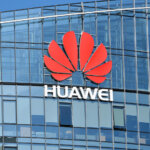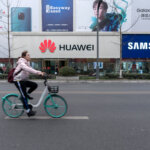Huawei has left the US in a frenzy with just one new smartphone
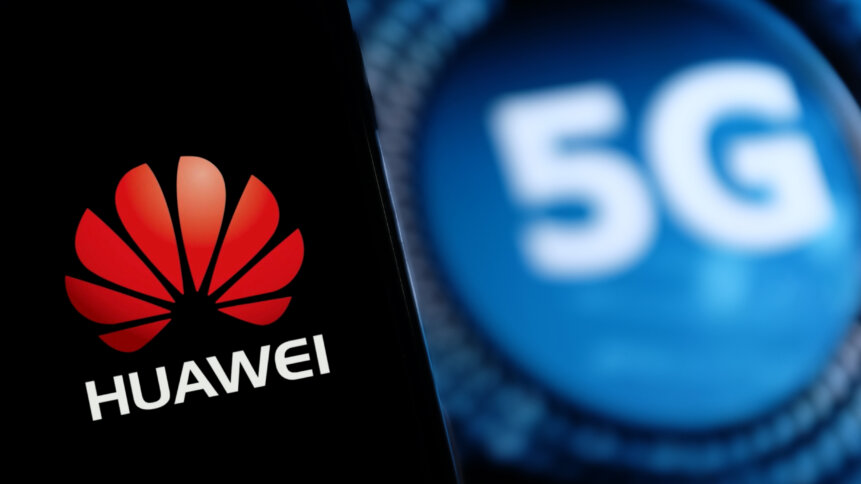
- The Mate 60 Pro release by Huawei suggests progress in the face of US sanctions.
- SMIC has also been under intense scrutiny as the Chinese chipmaker’s tech helped Huawei overcome US tech sanctions.
- South Korea’s SK Hynix Inc. has opened an investigation into the use of its chips in the Mate 60 Pro.
When the US imposed a severe embargo to cut off the supply of high-end chips to Huawei in 2020, many foresaw it being a counterproductive move by Washington. Yes, it might stifle the technological prowess of Huawei, but more than that, it would push the Chinese telecommunications giant to develop its chips more quickly.
That, it now emerges, was precisely what happened. Despite a slowdown, Huawei found a way to generate revenue outside its smartphone business over the years. It eventually proved to the world that obtaining US tech might be a ‘want’ for China, but certainly was not a ‘need’ for the superpower.
Last week, Huawei very quietly launched its latest smartphone, the Mate 60 Pro, and to say it created a wave in China would be a supreme understatement.
Huawei brought the world to a brief standstill. Many, especially US lawmakers, could not fathom the technological advancement. While users were raving about how fast the network speed of the Mate 60 Pro was, experts were shocked at how a company, bound by countless sanctions that had stopped it from partaking in the global 5G race, could produce something akin to a typical 5G smartphone.
It all started with a teardown of the handset that TechInsights conducted for Bloomberg News, which unveiled that the Mate 60 Pro was powered by a new Kirin 9000s chip fabricated in China by Semiconductor Manufacturing International Corp (SMIC). The processor was the first to utilize SMIC’s most advanced 7nm technology, indicating that Huawei had the technology to make such a chip, despite sweeping efforts by the US to restrict China’s access to foreign chip technology.
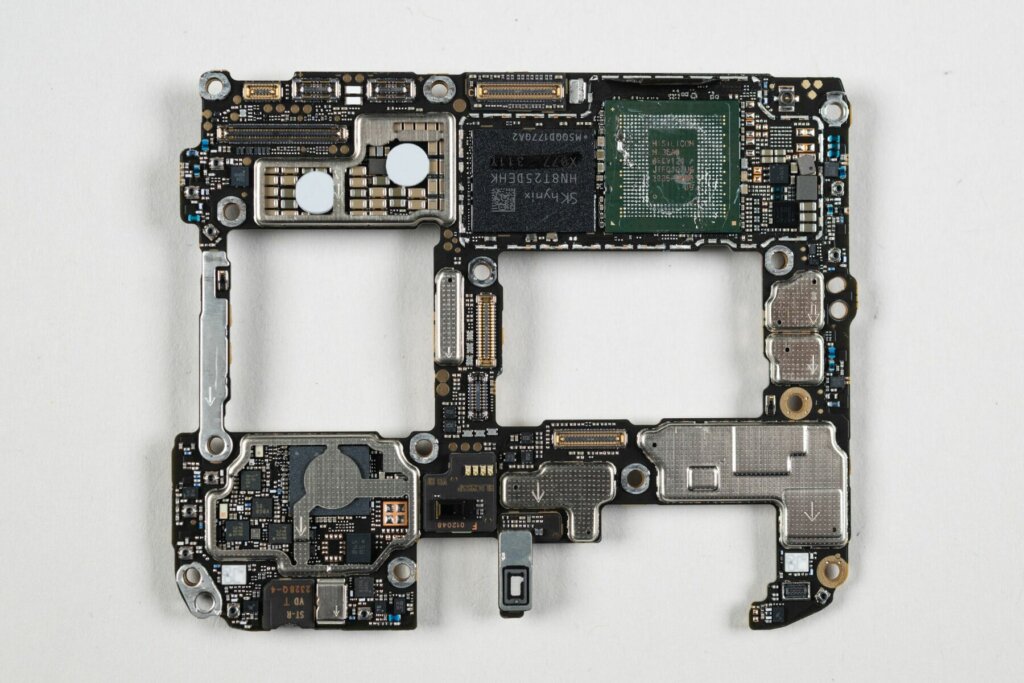
The Mate 60 Pro is powered by a new Kirin 9000s chip that was fabricated in China by SMIC. Source: Bloomberg/TechInsights
It “represents a made-in-China design and manufacturing milestone for the most advanced Chinese foundry,” TechInsights said. To top it off, the Mate 60 Pro came three years after Huawei last released a 5G smartphone, the Mate 40 series. But Huawei still has yet to publicly declare that it is a 5G-capable smartphone – all the embattled Chinese tech giant has said is that the Mate 60 Pro is the “most powerful Mate model ever.” Sometimes, it is more effective to speak softly and carry a powerful smartphone.
TechInsights reported that SMIC had made the Kirin 9000s via its 7nm process, known as the N+2 node, fuelling speculation that the chipmaker had been helping Huawei to quietly overcome the US’ heavy-handed tech sanctions. For context, SMIC was added to the US Entity List in December 2020, while Huawei led the way onto that trade blacklist in May 2019.
That is perhaps why experts expect the breakthrough in developing a new 5G processor in mainland China not only to prompt another round of investigation by Washington, but also to intensify the US-China tech war. It could also spark more debate in the US about the effectiveness of sanctions, Jefferies equity analyst Edison Lee said in an interview recently.
But, to an extent, the breakthrough wasn’t much of a surprise considering how experts, including semiconductor players based in the US like Qualcomm and Nvidia, have argued for fewer sanctions because Washington’s trade restrictions have only strengthened China’s motivation for tech self-sufficiency, while also damaging the commercial interests of US companies.
What does the US say about Huawei and its 5G feat?
Firstly, existing rules require any company that intends to supply Huawei with US technology, which is present throughout SMIC’s operations, to get approval from Washington. US lawmakers believe that China’s top chipmaker warrants investigation because it’s unclear whether SMIC has a US license to supply Huawei.
The US believes SMIC has violated US sanctions by supplying components to Huawei. “It sure looks like it did” violate sanctions, Representative Michael McCaul said Wednesday at a briefing at the US embassy in the Hague. SMIC continues “to try to get our intellectual property.”
Representative Mike Gallagher, chairman of the House Select Committee on Competition with China, on the other hand, says it’s about time “to end all US technology exports to both Huawei and SMIC, to make clear that any firm that flouts US law and undermines our national security will be cut off from our technology.”
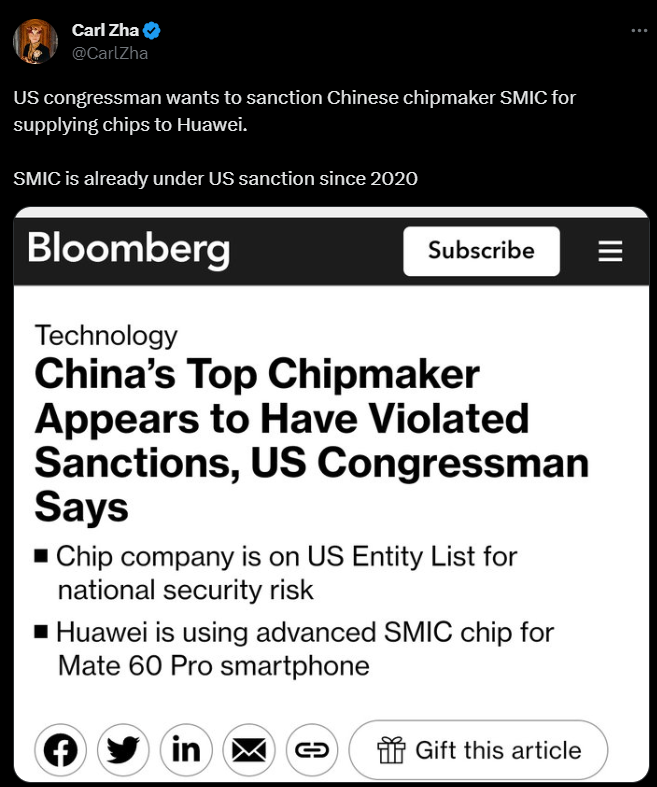
The US government is looking into the composition of the processor used in Huawei’s new 5G smartphone Mate 60 Pro. Source: Twitter
The fact that a staggering US$23 billion in licenses were granted by the Bureau of Industry and Security (BIS) to US firms to sell technology to Chinese companies in the first quarter of last year is evidence enough for some that the US may have been too lenient, American lawmakers emphasized.
South Korea SK Hynix started investigating
TechInsights‘ teardown showed that Huawei’s Mate 60 Pro used SK Hynix’s LPDDR5 and NAND flash memory. While Chinese suppliers almost entirely provide the handset’s components, Hynix’s hardware is an isolated example of materials sourced from overseas, TechInsights noted.
Following that revelation, Bloomberg reported that SK Hynix Inc. had opened an investigation into the use of its chips in Huawei’s latest phone. Icheon-based Hynix “no longer does business with Huawei since the introduction of the US restrictions against the company and, about the issue, we started an investigation to find out more details,” a company spokeswoman said in a statement to Bloomberg News. “SK Hynix strictly abides by the US government’s export restrictions.”
While it remains unclear how Huawei may have procured the memory chips from Hynix, which makes most of its semiconductors at plants in China, there is the possibility that the Chinese tech giant was tapping a stockpile of components it had accumulated as far back as 2020 before the complete set of US trade curbs had been imposed on it.






